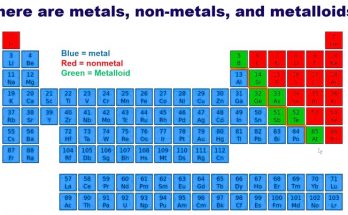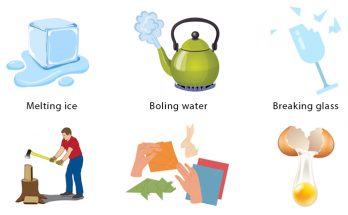Transportation in Organisms-
- Purpose- Transport essential substances (food, water, oxygen) to body parts; remove waste products.
- Circulatory System– Consists of the heart and blood vessels; moves substances throughout the body.
Blood Components-
- Plasma- Fluid part of blood.
- Red Blood Cells (RBCs)- Contain haemoglobin for oxygen transport.
- White Blood Cells (WBCs)- Fight against germs.
- Platelets- Help in blood clotting and wound healing.
Also Check – Class 7 Science- Chapter 11- Transportation in Animals and Plants – Complete Notes
Haemoglobin-
- Role- Binds oxygen for efficient transport.
- Importance- Present in RBCs; gives blood its red colour.
Blood Cell Functions-
- RBCs- Specialise in carrying oxygen.
- WBCs– Defend against infection.
- Platelets- Prevent excessive bleeding by clotting blood.
Also Check – NCERT Solutions for Class 7 Science Chapter 11-Transportation in Animals and Plants
Blood Donation-
- Importance- Saves lives and addresses blood shortages.
- Safety- Generally harmless and painless.
- Blood Banks– Collect, test, process, store donated blood.
Blood Vessels-
- Arteries- Thick, muscular, carry oxygen-rich blood from the heart.
- Veins- Thinner, with valves, return deoxygenated blood to the heart.
- Capillaries- Thin-walled for exchange of oxygen, nutrients, and wastes.
Also Check –NCERT Exemplar Solutions- Class 7 Science Chapter – 11-Transportation in Animals and Plants
Circulatory System Process-
- Oxygen Transport- From heart to cells via arteries.
- Waste Removal- Deoxygenated blood and wastes return via veins.
- Capillary Exchange- Nutrients and wastes exchange between blood and cells.
- Circulation Cycle- Continues to deliver essentials and remove wastes.
Pulse-
- Definition- Rhythmic throbbing of arteries due to heart’s contractions.
- Activity- Measuring pulse rate by feeling the throbbing on the wrist.
- Pulse Rate- Typically 72-80 beats per minute at rest, can vary with different factors.
- Pulse Points- Wrist is common, but other body areas also applicable.
Exceptions in Blood Vessel Roles-
- Pulmonary Artery- Carries deoxygenated blood to the lungs.
- Pulmonary Vein- Carries oxygenated blood from the lungs to the heart.
Heart and Circulatory System-
- The heart is a muscle located in the chest cavity, left of centre, about the size of a fist.
- It has four chambers- two upper atria (receive blood) and two lower ventricles (pump blood).
- Septa (walls) prevent the mixing of oxygen-rich and oxygen-poor blood.
- Blood flows in a specific pattern- deoxygenated blood goes from the right heart to the lungs, gets oxygenated, returns to the left heart, and is then pumped to the body.
- The left heart handles oxygen-rich blood; the right heart deals with deoxygenated blood.
- The heart beats in a sequence- atria fill and contract, pushing blood to the ventricles, which then pump blood to the lungs or body.
- Heart valves ensure one-way blood flow and prevent backflow.
- A heartbeat is the rhythmic contraction and relaxation of the heart, crucial for blood circulation.
Heartbeat-
- Can be sensed by feeling the chest or with a stethoscope, which amplifies heart sounds.
- Variations in heartbeat can indicate heart conditions.
Constructing a Simple Stethoscope-
- Made with a funnel, rubber tube, rubber sheet/balloon, and rubber band.
- Used to listen to the heart’s thumping sounds, which can indicate heartbeat rate.
Heartbeat and Pulse Rate-
- Each heartbeat creates a pulse in the arteries; pulse rate reflects heartbeat rate.
Circulatory Systems in Different Animals-
- Sponges and hydra lack a defined circulatory system and rely on their water environment for nutrient and waste exchange.
Excretion in Animals-
- Excretion is the removal of waste from metabolism.
- Wastes vary and can be toxic, requiring efficient removal systems.
- Animals have adapted excretion methods based on their environment (e.g., aquatic animals excrete ammonia; birds and reptiles excrete uric acid).
- In humans, the kidney plays a crucial role in filtering blood and excreting urea.
The Excretory System-
- It comprises organs that identify, process, and remove waste from the body.
- The process includes identification, filtration, and expulsion of wastes through organs like the kidneys.
Respiratory and Excretory Systems-
- The respiratory system expels carbon dioxide, while the excretory system eliminates various wastes.
- The digestive system removes food waste, while soluble metabolic wastes are handled by the excretory system.
Human Excretory System-
- Definition– Removes waste products from the bloodstream, maintaining internal balance.
- Components and Roles-
- Kidneys- Filter blood, produce urine.
- Ureters- Transport urine to the bladder.
- Urinary Bladder- Stores urine.
- Urethra- Expels urine from the body.
- Urine Formation Process- Filtration in kidneys, transportation via ureters, expulsion through urethra.
- Urine Composition- 95% water, 2.5% urea, 2.5% other wastes.
- Sweat- Assists in excretion and cools the body through evaporation.
- Dialysis- Artificial blood purification when kidneys fail.
Transport in Plants-
- Water and mineral uptake from soil through root hairs.
- Photosynthesis- Chloroplasts use water and CO2 to produce glucose and oxygen.
- Cellular respiration- Breakdown of glucose for energy.
- Importance of Transport- Supports growth, reproduction, and responses to stimuli.
Plant Transportation Mechanisms-
- Roots and root hairs absorb water and minerals.
- Vascular tissues (xylem and phloem) transport water, minerals, and nutrients.
- Xylem- Transports water and minerals upwards.
- Phloem- Distributes synthesised food throughout the plant.
- Tissues- Specialised cells performing crucial functions.
Practical Understanding of Transportation in Plants-
- Activity- Observing water/mineral transport using a plant stem in coloured water.
- Demonstrates the role of xylem and the transport of nutrients.
- Red ink acts as a visual aid to show the path of transportation.
Transpiration in Plants-
- Definition- Loss of water vapour from leaf surfaces.
- Role- Creates suction force for water movement, regulates temperature.
- Significance- Maintains water and nutrient flow, and environmental adaptation.
Class 7 – Science- Chapter 11-Transportation in Animals and Plants Question Answer (Solved MCQs)

